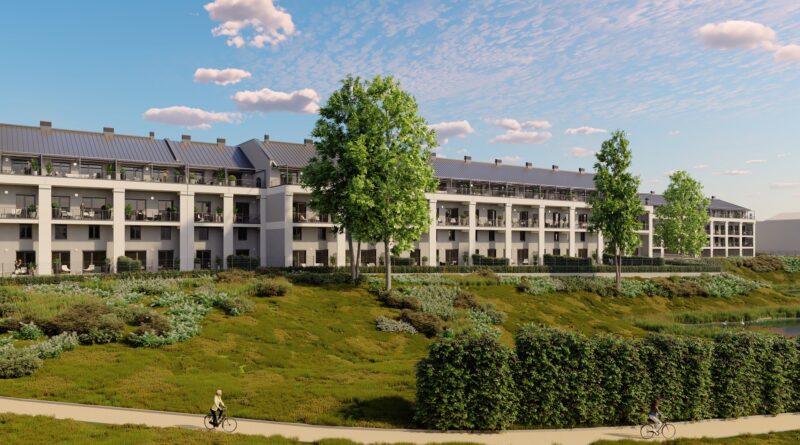GLOBAL PROPERTY INVESTMENT MARKET RECOVERY TO CONTINUE IN 2011
Global property investment markets are expected to continue recovering this year, according to Cushman & Wakefield’s International Investment Atlas 2011. A rising level of investment activity will include a broader focus on emerging and second tier markets not just the core gateway cities which were the winners in 2010.
• Global investment is expected to increase by 5-10% in 2011, hitting US$606 bn (€485 bn)
• North America and emerging markets to lead, with investment in Latin America and Eastern Europe forecast to rise by over 40% this year, second tier not just gateway cities to benefit
• Asia to grow further but activity in parts of China will slow as policy is tightened
• Rental and income growth to take over from yield compression in driving performance
The report forecasts that an increasing focus on the occupier will characterise the market this year, with rent and income growth to take over from yield compression in driving performance.
The report, which monitors investment flows in commercial property in 56 countries, reveals that global investment volumes jumped 42% to US$564 bn (€430 bn) in 2010. Dealing volumes are still only around 50% of their peak but they are over 80% of their five year average and in some markets are setting fresh highs – notably emerging markets in Asia and Latin America. Yields fell in most areas last year, as higher demand and limited supply impacted. The global average fell 21bp to 7.6% and a further fall averaging 30bp is forecast for 2011.
Asia held the top spot as the leading region for investment – accounting for more than half of all global activity for the second year running – followed by the U.S. in second place and the UK in third. Volumes in the top 20 cities grew by 59% as investors focused on the most robust locations. London was the leading global city for investment, followed by Tokyo, New York and Paris.
Greg Vorwaller, Global Head, Capital Markets, Cushman & Wakefield, said, “2011 will present more challenges for the global real estate market. However, there are upside risks to consider, in the potential for economic recovery to be sustained and for increasing levels of business and financial confidence to translate into greater-than-expected levels of market activity. Countries will continue to develop at varying speeds though and investors need to keep their eyes open to the risks they are taking on. They should look to push diversification back up their agendas: by region, country, sector and currency.”
Occupier trends
The global occupier market started to rally in 2010 and rents rose by 2%. The recovery has been polarised between prime and secondary and has also seen a new tier of ‘ultra prime’, reflecting the stronger demand for the very best core properties.
Leasing volumes are likely to increase further in 2011, with a focus on the most effective property and markets in all sectors. A shortage of new development and falling Grade A vacancy in Europe and North America will result in a return of rental growth. However, overall high vacancy and cost consciousness will keep rental growth down, with the report forecasting an average of around 3-5%. In Asia and parts of Latin America rents have started to gain some momentum and increases of 5-10% are anticipated this year, although the elasticity of the supply pipeline means growth will be volatile.
David Hutchings, Partner, Head of the European Research Group, Cushman & Wakefield, said, “The global market will remain polarized in 2011 but it is too simplistic to describe it as “two tiered” – it is becoming multi-tiered as the compromises of occupiers and investors drive different segments of the market. Our forecasts assume that events in North Africa and the Middle East stabilize in the near term and that the risk premium in oil prices does not derail growth. Even taking this into account however, investors and occupiers may need to revisit their assumptions on macro and geopolitical risk, not to mention giving greater weight to environmental and natural risks in many areas.”
Regional performance
Athough all regions are seeing improved performance and activity, the scale and timing of change varies. The Americas are ahead for investment growth, Asia for the occupational market recovery – followed by the Americas – and EMEA and the Americas are experiencing the most market yield changes.
EMEA
EMEA investment rose nearly 50% in 2010 to US$155 (€120 bn) with Central & Eastern Europe up 60% and the West, by 56%. Investor demand picked up late last year after a slow summer period due to sovereign debt worries. Demand has focused on the most liquid markets, with the UK, Germany, France and Sweden seeing most activity and aggressive bidding on core assets. However, as yields in these markets have fallen, some investors have begun to look at other areas such as Poland, Russia and Turkey.
Michael Rhydderch, Head of EMEA Capital Markets, Cushman & Wakefield, said, “It is now clear that the volume of assets coming to the market is increasing substantially as a result of banks forcing or encouraging action. At the same time the volume of equity in the market is ever greater and debt is, selectively, becoming more affordable and available. We are expecting an active trading environment and continued pressure on prime yields during 2011.”
































